Right Round - Learn Audio Production
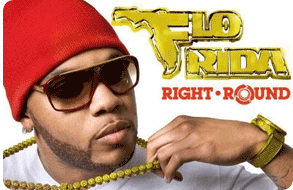
 It’s easy to judge a song by its chart performance or the amount of money it makes. On those counts, Flo Rida’s “Right Round,” a re-conceived version of the 80’s smash hit “You Spin Me Right Round” by Dead or Alive, has been a huge club and radio success. The triple platinum single has hit #1 on charts around the world, with record-setting digital download sales. But what’s behind that success? In fact, Right Round became a musical tour de force for one main reason: its domination of the dance floor. From the powerful new producer DJ Frank E, comes a devastating beat: a thick, driving kick with a mixture of snare layered with classic ModernBeats claps. The song’s production hits like a bomb: exploding with 80’s-style synth hooks and flourishes, propelling the voices of Flo Rida and newcomer Ke$ha to new-found fame and fortune. Yes, Flo Rida has become “king of the club,” and in the full Hit Report below, you will find out exactly how it happened. In this online preview we’ll examine chord progressions, and synth production.
It’s easy to judge a song by its chart performance or the amount of money it makes. On those counts, Flo Rida’s “Right Round,” a re-conceived version of the 80’s smash hit “You Spin Me Right Round” by Dead or Alive, has been a huge club and radio success. The triple platinum single has hit #1 on charts around the world, with record-setting digital download sales. But what’s behind that success? In fact, Right Round became a musical tour de force for one main reason: its domination of the dance floor. From the powerful new producer DJ Frank E, comes a devastating beat: a thick, driving kick with a mixture of snare layered with classic ModernBeats claps. The song’s production hits like a bomb: exploding with 80’s-style synth hooks and flourishes, propelling the voices of Flo Rida and newcomer Ke$ha to new-found fame and fortune. Yes, Flo Rida has become “king of the club,” and in the full Hit Report below, you will find out exactly how it happened. In this online preview we’ll examine chord progressions, and synth production.
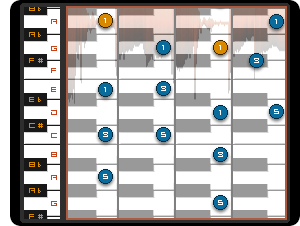 |

Right Round Chords - Chord Map Preview
The chord progression in Right Round is, of course, the same progression used by Dead or Alive in “You Spin Me Right Round.” The chord progression is A minor, C major, G major, A minor, D major, G major (or in scale degrees: i, III, VII, i, IV, VII). This progression begins like many typical rock progressions: first starting with a minor chord, and ascending to the relative major, eventually landing on the major sub-dominant (IV; in this case D). Above in the chord map preview, we’ve shown a small section of the full chord map. It shows the correct left-hand finger positions for the triad versions of the chords that occur in the hooks and verses: A minor, C major, G major, D major. The full Chord Progression Map illustrates 12 chord patterns for both left and right hands, including the crafty key change and diminished 7th chord resolution at the end of the bridge. Studying chord progressions, and how those progressions change during the course of a song, is an invaluable exercise if you want to compose and arrange: and if you’re a producer, you’d better know how to compose and arrange.
Right Round Synths - Resonant Synth Production
In our full report, we supply detailed instructions on many of Right Round’s synth sounds. This particular effect, what we’ve termed the “resonant zap”, is a distinctive 80’s-style analog synth effect created by filter resonance. In Right Round, this effect occurs in the middle of the verses and during the bridge: a quick syncopated effect that alternates between the left and right channels. Here’s how that sound is accomplished:
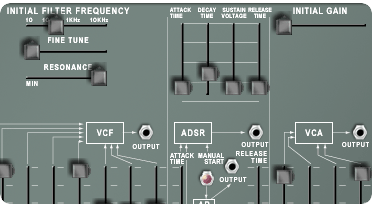 1. Filter Resonance and Filter Envelope
1. Filter Resonance and Filter Envelope
At left is the initial filter frequency and envelope sections of the Way Out Ware TimewARP 2600. Programming synth patches using the Arp 2600 is one of the best ways to learn synth sound design. The GUI at left shows a virtual recreation of the original control surface. By dragging virtual cables from input to output, you can route the synth’s modules just like you would route hardware components. Fortunately, the technique we’re explaining is much simpler. Here we’ll look at how the filter resonance and envelope can create a the zap effect we refer to.
Most synths begin with oscillators which in turn route through filter and modulation sections. Setting your oscillator to produce noise (or something close to noise) is how to begin recreating the type of zap heard in Right Round. But the oscillator isn’t as important as the filter. That’s because the tonal character of a resonant zap like this one depends mainly on the filter and ADSR settings. If you have a choice of filter type, select bandpass or lowpass. Setting the filter frequency within the range of 300Hz to 1kHz is ideal. The filter resonance should be set reasonably high: above, it’s at maximum. Finally, setting all of your synth’s ASDR sliders to minimum values while leaving a short decay like in the above illustration will yield a tight filter and amp envelope, modulating the filter and creating the characteristic “tchip.”
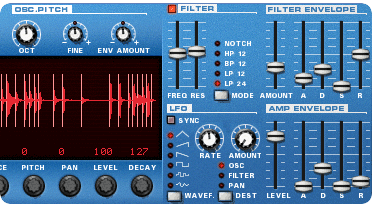 2. Reason Rex Filter Resonance
2. Reason Rex Filter Resonance
If your workstation of choice is Reason, many of Reason’s instruments contain filter resonance settings. Reason’s Dr. Rex player, pictured at left, has a particularly colorful filter resonance. The Dr.Rex player plays “rx” files: wave files cut into sections for the purpose of slice-by-slice processing. If you’re using a Rex file like the one at left, with many percussive transients, making a zap is dead easy. In the filter section at left, we’ve set the filter to a high-resonance lowpass setting. We’ve softened the attack, and the decay is still short. The result should sound whip-like. This, combined with the ability to swap rhythms, and pan individual slices, makes the Dr. Rex another perfect tool for this job.
Right Round In-Depth - The Full Downloadable Report
Right Round’s strengths are its ability to pack the dance floor, and its modernized recreation of 80’s-style synth production. The bounce of the beat is fueled by a carefully-arranged, triplet-based dance rhythm that we’ve explained in careful detail in our full report. In addition to an in-depth focus on synth production, our dissection of Right Round has many a lesson to teach for aspiring music producers. Though critics have coughed up mixed reviews, the dance floor has spoken. DJ Frank E’s tantalizing assemblage of diabolical synth sounds and pounding urban rhythms has become an unstoppable juggernaut heard in nightclubs around the world. Below, our full hit report shows exactly how Right Round dominates the dance floor.
| Order the full “Right Round” Hit Report & Get it all… | |
 Right Round Song Format Map! (View All) Right Round Song Format Map! (View All) Right Round Frequency Separation Map! (View All) Right Round Frequency Separation Map! (View All) Right Round Song Arrangement Map! (View All) Right Round Song Arrangement Map! (View All) Right Round Melody Map! (View All) Right Round Melody Map! (View All) Right Round Chord Progression Map! (View All) Right Round Chord Progression Map! (View All) Right Round Track Detail Map! (View All) Right Round Track Detail Map! (View All) Right Round Song Arrangement Step-by-Step Report! Right Round Song Arrangement Step-by-Step Report! Right Round Vocal Production Step-by-Step Report! Right Round Vocal Production Step-by-Step Report! Right Round Transient Synth Step-by-Step Report! Right Round Transient Synth Step-by-Step Report! Right Round Bass Production Report! Right Round Bass Production Report! Right Round Claps Production Step-by-Step Report! Right Round Claps Production Step-by-Step Report! Right Round Music Production with Propellerhead Reason! Right Round Music Production with Propellerhead Reason! Right Round Music Production with Sony Acid! Right Round Music Production with Sony Acid! Right Round Keyboard Technique Reports! Right Round Keyboard Technique Reports! Right Round Production with Rob Papen Subboombass! Right Round Production with Rob Papen Subboombass! Super Bonus: VIPKIT#22, 105 Samples, $30 value! Super Bonus: VIPKIT#22, 105 Samples, $30 value! |
|
| Enhance Your Music Production Skills Today! |
|







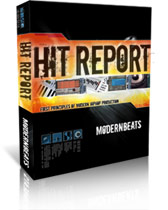
 GET 20% OFF COUPON INSTANTLY W/ SIGN-UP!
GET 20% OFF COUPON INSTANTLY W/ SIGN-UP!
 Check Out Hot Artists & Music Producers discovered through Song Submit!
Check Out Hot Artists & Music Producers discovered through Song Submit!
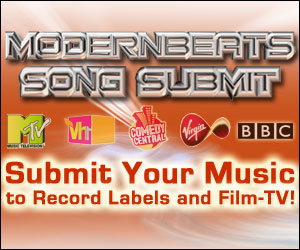


how can i learn how to create hip hop drum kits and piano rythm because it is giving me mob headache.
Mob headache? hehe. Yo, the best thing is - practice to a metronome. Seriously. Take out a beat pad, learn a few beats. Take out a keyboard, learn a few chord changes… try to establish a smooth-sounding feel, and just use a metronome… Rhythm is the right word. You may or may not be equipped with midi controllers, but if you are - learn how to use them slowly… Do you use midi, or do you program via pre-recorded samples?
Damn I’m loving my first HR I got from you guys. Brilliant and so insightful. It’s helping me “understand” what I’ve always known with my ears. Amazing!
One question tho… I’m having trouble finding the “right” kick for Right Round as I try to re-create it… but none of the ones I pick seem to fit just right.
The only suggestion I have is that in a few spots you kinda lose me with the way the steps are written, especially when you do the step by step claps. Seems like towards the end you go thru several steps in a single sentence. Otherwise… very, very helpful and impressive.
I’ll be returning.
Yo OtherJesus,
Hmm… finding the right kick might be tricky. You may try a lowpass filter on it, and play with the cutoff frequency. Glad you dug the Hit Report, despite the amalgamated steps. Valid point.
The only other suggestion we might have is rather than trying to copy the beat exactly, why not make it your own? Afterall, Hit Reports are mainly production lessons. The principles you garner from them can shape your style, but your style should still be your own.
Cheers,
HTstaff
HTstaff,
Thanks for the reply and the tips on the kick.
In my beats I have such a hard time getting the kick to “shine” like it does on the radio, say as in Right Round or Lady Gaga’s current 3 singles.
Hey… and good looking out too. I am using the 4 on the floor style of Right Round, and I did use the clap technique, but other than that, my sounds and progression are my own. Someone on your staff will get to listen to it when I submit it in the near future! ;)
You guys are very professional and I appreciate your tips.
-oj
Yo OJ,
Have you signed up for the email tips? There are some more tips in there that will help fatten up your bass. Click “get 10 free production tips” in the black nav bar.
HT
Hey OtherJesus,
Don’t forget either that you can use more than one kick layered on top of others. That’s one way to get some badass, huge drum sounds. In most of my productions (which admittedly are not always hiphop) I use at least 2 kits. Sometimes I even add a bass synth hit on certain parts of the song. It can really make a difference when trying to differentiate between choruses or verses.
Cheers,
wes
http://www.fullbirdmusic.com/blog
What’s up Hit Talk?!! My question is concerning bands and shelving as far as recording is concerned. I have general understanding about recording and mixing but it’s just the “little things” such as the ones previously addressed that I would like to know about to make me a deadly producer. Thanks in advance…
Yo C Cren,
Try reading the online production tips (see the nav bar above) and sign up for the email tips. Once you get through that mini-course, you can either buy Hit Theory - highly recommended :p - or you can ask us to elaborate on something specific you have a question about.
cheers-
HT
My little girl want to be a rapper
Thanks Sharhonda,
you also asked how to get started in one of your other comments. You might look at getting a USB microphone that you can use to record directly into your computer. That’s a good place to start.
How would you find the best studio rates?
I want to go into rap and i want to produce myself,how do i go about it….Becos nigeria rap is growin fast.
Hi Bob,
Do you know a group of musicians you can get started with? Do you play any music already? Best thing is to get familiar with an instrument and with rhythm and melody to start, then the technical stuff can wait until the creative musical juices are flowing. Unless they’re already flowing, in which case Hit Theory is our ebook on starting up… you might also check the “Industry Interviews” section of the site.
Does this report go into detail about drum production? I could use some tips there- a side note: I’ve always wanted to know- how did they get that kick sound on Ja Rule’s “Livin It Up”? I’ve always loved that kik sound!!!! and the song is one of my all time favorite hip hop songs
We’ve mainly focused on the claps in the report, but percussion isn’t everything, it helps to know about how the synths blend with the beat, and we’ve defintely covered that. The beat wouldn’t be what it was without those glitchy synths. We’ll have to give Livin It Up a fresh listen through the big mons when we get a chance.
Hey!
Maybe a stupid question but… I wanna buy this package but I live in Finland.
How does it work after I pay the money? Does it start downloading automatically?
Hi K.G.B
There’ll be a link and password sent to your e-mail then it’s just a simple click and download for the Hit Reports..
I want to know what is a good age to get started in the music business and is it better to be an independent artist ?
Thank you for this fantastic information because finding relevant sites on this topic is sometimes hard to find. You did an excellent job covering the subject and I look forward to more posts from your site. Do you offer RSS Feeds or feedburner to get more content for our blogs? I will be sure to include links from my other blogs to yours.
This song was produced by Dr. Luke, not DJ Frank E. I guess it’s a really good write-up, other than this rather crucial error.
@ Matt,
Yes, the song is indeed, as you say, produced by Dr. Luke. He exec. produced it, however he found the original beat through A&R (Atlantic?), and then built on it. Since the majority of our report deals with the workings of that beat written by DJ FrankE, it’s him we credit here.
Thanks for mentioning
Best,
HT
I see. So as an executive producer, what parts would he (Dr. Luke) have contributed to the song? I only mention this because I read an interview in which he discusses this song, and he refers to it as though it’s his own creation. He mentions something about Flo Rida not necessarily being sure about going with his (Dr. Luke’s) track over some other guy’s, and then playing both tracks for some girls who were in the studio and asking them which they preferred. Luke says that they both said they preferred HIS, and so that’s what Flo ended up rapping on.
Check the Aaron Bay-Shuck interview at Hit Quarters. Then just do a page search for “DJ Frank E”. Maybe there was a new version. He’s at least the originator of that blippy shuffle beat.. Kool Kojak also co-produced. It’s probably a mistake to pin the production on any one person, because anyone listed in the production credits had some say. The core of what we present in the full report is FrankE’s… The zaps that we talk about above are an embellishment that could have been added by someone else (Luke or Kojak).
i have my own song called kisasi. its a swahili song that talks about grudge, i am a musician, a video edior and an actor too. i write script for creen but i have never prepared a script for a song. please advise me on how to prepare the video for kisasi song i live in kenya am 22 years old an upcoming artist in the country i realy need help
That’s an interesting question Gerald. Although we deal primarily with audio production and songwriting, you can find an interview on our site with producer/songwriter Wayne Wilkins:
https://www.modernbeats.com/hit-talk/wayne-wilkins-keepin-it-simple/
He has some useful things to say about songwriting: lessons which could be extended to video script-writing as well. We’ll post the relevant comments, and maybe take a peek at the rest of the interview.
“In terms of the songwriting front, it’s a similar thing. You want to be very clear with what your song is saying, rather than trying to get lots of clever things in there, you know it’s nice to have a few artistic words, but you really want to be clear with what you’re saying and you want the listener to grasp. If you listen to any hit song, generally the biggest hit songs have a very simple thought that runs through them that people can understand and can connect to.
And also in terms of writing songs, you want to try and find concepts that stand out and that make people want to listen. So even from the title of the song, if you can come up with a title that inspires a certain thought or a certain feeling, it makes people engage in that song. Or even, they’ll look down and see the CD cover, and think “I wonder what that song’s about” It’s good to have those kinds of things where everything’s very focussed and clear, as opposed to lots of crazy words and lots of images and all that.”
thankyou very much for your immediate atendance to my question. I am greatfull and I have started enjoying your website. i still have another question.
which is the best software for making beats and recording audio then advise me on how to reduce distortion in vocals. after recording.
my ohter question is on marketting, how do i get my song played in a radio station or a television channel
You’re welcome Gerald.
The best software is the one that suits your workflow. Ableton Live’s good for loop-oriented production, Cubase and Sonar are good for multi-track recording. cleaning up a badly-recorded vocal is much harder than creating a good vocal recording. Programs like Wavelab or Goldwave can help with certain audio imperfections. As for TV placement, check out our music placement service